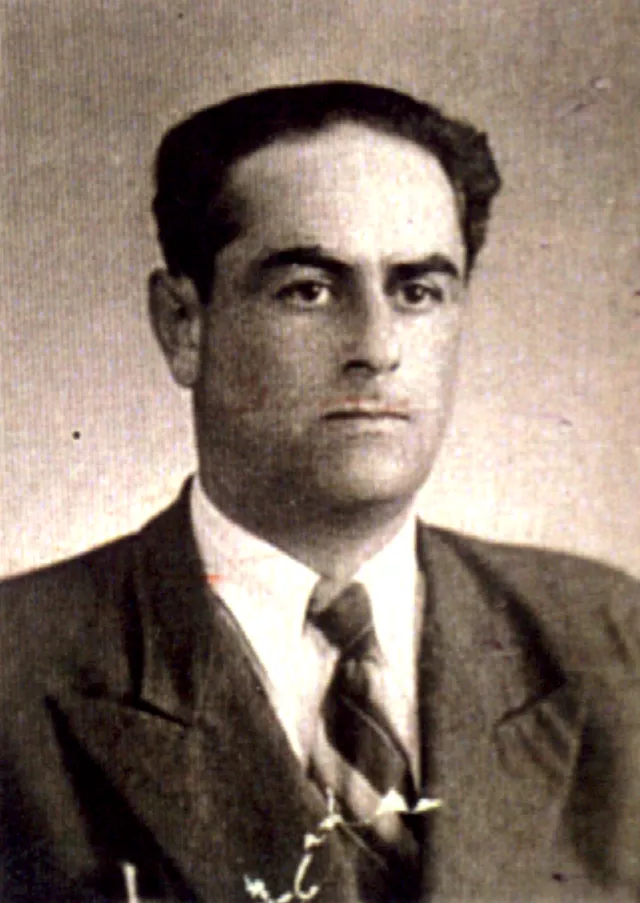This is me when I returned from exile to Tallinn. The picture was taken for my ID in Tallinn in 1958.
It was hard for me to find a job in the 1950s. I had two considerable disadvantages: I was a Jew, which meant a lot at that time, and I had been in exile. Thus I could not be trusted. Finally I was offered a job in a small construction and repair company. The director was from Belarus, who didn't know a single word of Estonian. He needed at least one foreman who would speak Estonian. I was employed owing to that.
Then I was hired by a large construction trust called Tallinnstroy. I was responsible for the construction of a residential house. The house was poorly designed and was to be constructed by different construction organizations which were included in the trust. I was the 13th foreman who worked on that site. The house was located on a broad street, where there was a large traffic flow of trucks and there was a tangible vibration of ground. A week after I had started work I understood that something was wrong with that house. I found a significant obliquity of the walls. The upper panel was barely stable due to the skewing of the walls. I accepted the site in winter and understood that in spring, when the thawing began and the soil became soft, even the smallest shaking would be enough for the house to be ruined.
I called the polytechnic institute and requested a check-up commission. In a couple of days the commission was sent to the construction site. It was lead by the reinforced concrete expert, Professor Laur. When he superficially looked at the building, he said that in his opinion I was imminent with imprisonment and asked how long I had been working there. I said that I had worked for about a week and explained the situation to him. Then a detailed survey of the building was assigned and as a result it was found out that there were roughest violations during design and construction, not to mention the thousands of petty mistakes and flaws?
It was discussed that the house should be dismantled and started over again. When that issue was considered at the central committee of the Party in Estonia, it was decided that the house should be restored at any cost. Even military construction units were involved for that and the expenditures considerably exceeded the value of the house. I was transferred to the construction department as a team leader.
Then my career went swiftly up and before retirement I was the director of the department in spite of having two 'stigmas' - being a Jew and not a member of the Party. My boss was being constantly told in the regional and municipal party committee: 'Why are you keeping that Jew? He should be fired!' But he didn't give up and stood up for me all time.
There were 32 construction departments in Estonia and our department had the worst performance ratios. When I became a chief engineer, it became the best in Estonia and was regularly awarded governmental prizes and orders.
Simon Rapoport
The Centropa Collection at USHMM
The Centropa archive has been acquired by the United States Holocaust Memorial Museum in Washington, DC.
USHMM will soon offer a Special Collections page for Centropa.
Academics please note: USHMM can provide you with original language word-for-word transcripts and high resolution photographs. All publications should be credited: "From the Centropa Collection at the United States Memorial Museum in Washington, DC". Please contact collection [at] centropa.org.






















